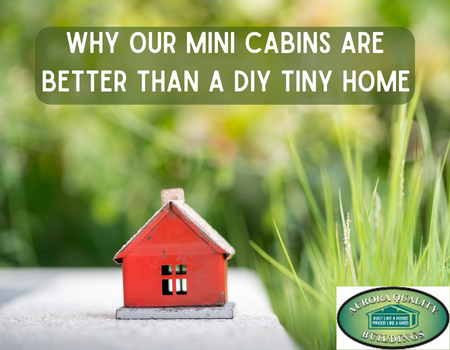How Sustainable are Tiny Homes?
Copy Link

Tiny homes are definitely a trend for those hoping to live a more affordable and less environmentally impactful lifestyle. These are the two main reasons that people look for what is called a sustainable home, one that uses less energy than the average traditional house. How sustainable is a tiny house really?
A tiny home can be anywhere from just a mere 100 ft.² to maybe just over 1000 ft.². There are some diehard tiny home enthusiasts however that will say a tiny home is not anything over about 400 ft.². The super diehard enthusiasts might say it’s nothing over 200 ft.², and that anything over this is actually a small home, not a tiny home.
The tiny home movement has gained a lot of momentum and has sort of exploded just in the last five years, with most of its popularity and drive coming from an ability to significantly reduce your environmental footprint and live well within your means financially.
And in some cases, a tiny home allows someone who may not otherwise be able to afford a traditional house to become a homeowner. Though it has been shown that a tiny house costs more in price per square foot since the square footage is so minimal expenses are lower. This also includes the cost of being able to run and maintain the home.
But outside of the factor of the home being tiny contributing to its affordability and sustainability, tiny homes actually have sustainable benefits that a larger traditional home does not offer.
More: Is there a difference between a tiny house and a small home?
Here are some of the most sustainable attributes of tiny homes
Most tiny homes are built with sustainable materials
Being that a tiny home is so small, it is more attainable to use the most high-quality and eco-friendly materials when building a tiny home as it is still within an affordable range to do so. For this reason, it is hard to find a tiny home that is not filled with the most responsible and sustainable materials. Some tiny homeowners have even built their homes with salvaged materials that have been cast off from builds of much bigger homes. There are a few companies that build tiny homes that use this recycled material model.
Tiny homes do not have a lot of space to hold onto stuff
Living in a tiny home means that you will have to take on a minimalist lifestyle. After all, there’s only so much you can fit into this tiny square footage. With such a very limited amount of room, clutter can quickly accumulate and make you feel like your house is overtaking you. In a way, a tiny house trains you to not retain material possessions and put your focus elsewhere. Thus creating fewer items that sit around or create garbage.
Tiny homes use much less energy
The bigger space is the more energy and effort it takes to create a comfortable climate inside. In the winter this means heat and, in the summer, this means cooling. The Alliance to Save Energy reports that tiny homes are very energy efficient compared to the standard 2500 square-foot traditional home.
Of course, there are some more energy-efficient tiny homes compared to others because of the way they are designed. For example, a tiny home with huge windows can be a great way to feel like you have tons of open space, but it can also be harder to keep hot or cool due to the windows.
About how much energy and money do tiny homes save owners?
The biggest savings to tiny homeowners of course are in the categories of utility costs and needing fewer materials and stuff for the home. A tiny home costs on average around $25,000 to build. This is a huge saving as compared to the national average cost of a traditional home being at around $236,000.
As for the category of utilities, tiny homes are big energy savers and many of them are set up to have an off-grid type of lifestyle where they are not plugged into the large systems and infrastructure of the city in which they are. With less space to heat up and no monthly commitment for public utilities, a tiny home can save hundreds per month on utility costs.
For more information on tiny home structures in Puget Sound, please contact us anytime or stop by and visit us in person in North Snohomish County.
More on Tiny Homes in the Pacific Northwest
- What to Know About Building a Tiny Home on a Foundation
- 5 Ways of Maximizing the Space on Your Tiny Home Deck
- Doing Remote Work From a Tiny Home
- 4 Clever Small Space Living Tips for Tiny Homes
- Is a Tiny House a Good Plan for a Retirement Home?
- What Size Can a Tiny House Be Within the Laws?
- Tips for Sleeping in a Loft in a Tiny House
- Choosing Appliances for Your Tiny Home
- Can a Tiny home improve a community?
- How to Host Dinner Parties in a Tiny House
- Doing Remote Work From a Tiny Home
- How to Create an Open Concept without a Major Renovation


